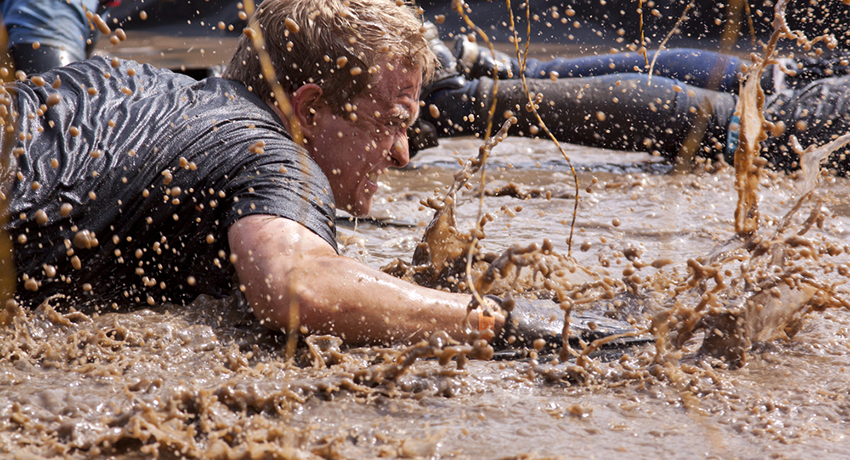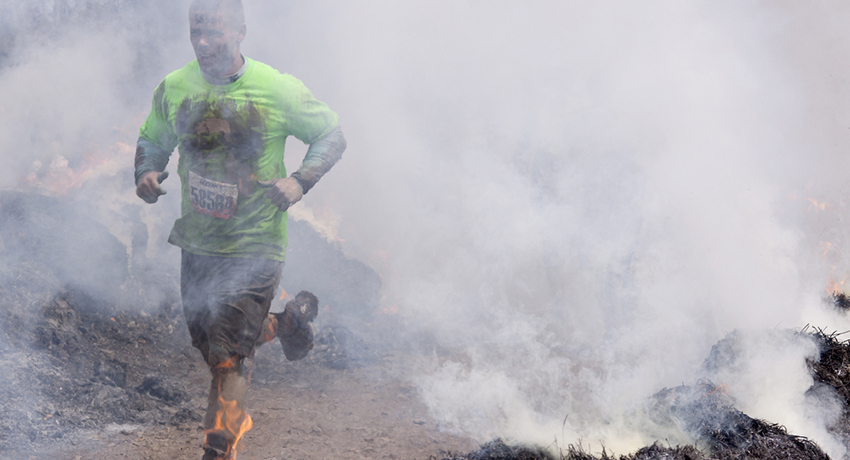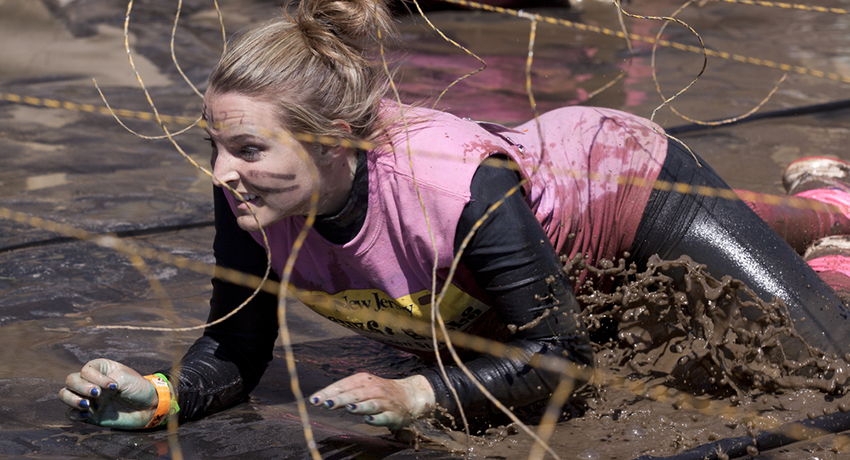Think Twice About That Next Tough Mudder Race

All Glynnis Jones / Shutterstock.com” target=”_blank”>Tough Mudder images by Glynnis Jones / Shutterstock.com
Want an arctic enema? Electroshock therapy? What about the chance to walk over fire? Those are just a few of the more than 20 obstacles that participants must navigate through in the 10-plus mile Tough Mudder race. Hub Health knows. They’ve been there.
Founded by Will Dean, a Harvard Business School graduate and former counter-terrorism agent for British Special Forces, Tough Mudder events have attracted more than a million participants since the first event in 2010, according to the event’s website. Since then, it has exponentially increased in popularity with events across the world.
But is it safe? The first-ever case study that details the injuries sustained during a Tough Mudder event was released in November and published in the journal, the Annals of Emergency Medicine. During a two day race in Pennsylvania in June, there were 38 emergency department visits recorded at a single local hospital. Not surprisingly, orthopedic injuries were the most common injury type.

The five patients with the most serious injuries were highlighted. The first, an 18-year-old male, was admitted with chest discomfort after receiving 13 electrical shocks. The workup revealed myocarditis, a serious heart inflammatory process. The second patient, a 28-year-old male, sustained syncope and altered mental status after multiple electrical shocks. He was admitted for accelerated hypertension, electrolyte disturbances, and possible pericarditis due to electrical injury. The third patient, a 31-year-old male, developed right-sided weakness, altered mental status, and possible seizures after completing 20 of the 22 obstacles. He was admitted to the ICU for paralysis and stroke. Patient number four, a 41-year-old male, was struck in the head by two electrical cords. He sustained loss of consciousness, serious head injuries, electrical injury, and hypertension. The final patient, a 25-year-old woman, was shocked just before the finish line. She felt light headed and was admitted for dehydration and rhabdomyolysis, a serious muscle injury.
These are serious injuries, indeed. It’s not hard to understand why they occur. Some of the obstacle’s names are as intimidating as the obstacle itself. The “Arctic Enema” is where participants swim through freezing water and under a plank, “Bale Bonds” is a hurtle where participants push themselves over a bale of hay with a buried pitchfork, “Electroshock Therapy” requires one to run through a field of live wires (up to 10,000 volts), “Fire Walker” involves running through fire pits and jumping over flames into freezing water, and the “Kiss of Mud” is where participants crawl through mud under barbed wire.

I took an informal poll of my orthopedic surgeon colleagues at Newton-Wellesley Hospital, many of whom treated patients from a Tough Mudder event this past summer at Vermont’s Mt. Snow. Just a few of the injuries included an ACL/MCL injury, a hip labral tear, and two ankle fractures. Injuries as a result of training for such endurance events were also commonly encountered. These included various tendonopathies, bursitis, and overuse injuries. Not surprisingly, the conversation often turned to CrossFit, since the events typically attract the same athletes, but that is another story.
The bottom line is that the injury patterns encountered are unique, unlike anything seen in other endurance races. The lessons learned from this case series are that there needs to better EMS preparedness and safety monitoring. Participants should be aware that no training will prevent injuries sustained from electrical shocks, crawling under barbed wire, or hypothermia from running through freezing water. Consult your physician before you decide to enter. It’s never too early. After all, registration is already open for the 2014 New England Event at Mt. Snow.


